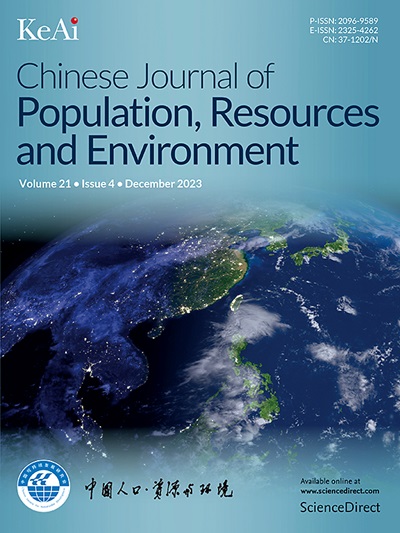Can industrial agglomeration alleviate energy poverty? Evidence from China
IF 4.8
4区 环境科学与生态学
Q2 ENVIRONMENTAL STUDIES
Chinese Journal of Population Resources and Environment
Pub Date : 2025-03-01
DOI:10.1016/j.cjpre.2025.01.002
引用次数: 0
Abstract
This study determines whether industrial agglomeration can solve energy poverty (ENPO) by applying a provincial dataset (2002–2019) to assess the potential effect of industrial agglomeration on ENPO. Additionally, this study conducts an in-depth exploration of provincial heterogeneity and its influence mechanisms. The conclusions are as follows: ① Industrial agglomeration is negatively correlated with ENPO; by implication, enhancing industrial agglomeration is a driving force for reducing ENPO. ② The alleviating effect of industrial agglomeration on ENPO in the midwestern region is considerably higher than that in the eastern region, and the ENPO alleviation effect of the high agglomeration region is better than that in the low agglomeration region. ③ Foreign investment and energy efficiency have a mediating role, that is, they are valid transmission pathways for industrial agglomeration to solve the ENPO issue. Relevant policy suggestions for reducing ENPO by accelerating industrial agglomeration are proposed by drawing on the above three conclusions.
产业集聚能缓解能源贫困吗?来自中国的证据
本研究采用2002-2019年省级数据集,评估产业集聚对能源贫困的潜在影响,确定产业集聚是否能够解决能源贫困问题。此外,本研究还深入探讨了省际异质性及其影响机制。研究结果表明:①产业集聚与ENPO呈负相关;由此可见,增强产业集聚是降低ENPO的驱动力。②中西部地区工业集聚对ENPO的缓解效果明显高于东部地区,且高集聚区对ENPO的缓解效果优于低集聚区。③外商投资与能源效率具有中介作用,是产业集聚解决ENPO问题的有效传导途径。结合以上三个结论,提出了通过加快产业集聚来降低ENPO的相关政策建议。
本文章由计算机程序翻译,如有差异,请以英文原文为准。
求助全文
约1分钟内获得全文
求助全文
来源期刊

Chinese Journal of Population Resources and Environment
ENVIRONMENTAL STUDIES-
CiteScore
4.30
自引率
1.10%
发文量
791
审稿时长
79 days
期刊介绍:
The Chinese Journal of Population, Resources and Environment (CJPRE) is a peer-reviewed international academic journal that publishes original research in the fields of economic, population, resource, and environment studies as they relate to sustainable development. The journal aims to address and evaluate theoretical frameworks, capability building initiatives, strategic goals, ethical values, empirical research, methodologies, and techniques in the field. CJPRE began publication in 1992 and is sponsored by the Chinese Society for Sustainable Development (CSSD), the Research Center for Sustainable Development of Shandong Province, the Administrative Center for China's Agenda 21 (ACCA21), and Shandong Normal University. The Chinese title of the journal was inscribed by the former Chinese leader, Mr. Deng Xiaoping. Initially focused on China's advances in sustainable development, CJPRE now also highlights global developments from both developed and developing countries.
 求助内容:
求助内容: 应助结果提醒方式:
应助结果提醒方式:


